In a survey of marketers, findings revealed that:
- 52% of marketers used intent data for delivering targeted ad content
- 47% leveraged it for email marketing
- 44% of respondents indicated its use in marketing personalization
These numbers reveal the importance of buyer intent data in your marketing strategy.
Buyer intent data is a potent tool for B2B marketers, revealing actionable insights into potential customers’ interests in your company’s offerings. This enables precise targeting for sales and marketing, leading to substantial revenue growth.
But what is this buyer intent data? That’s what we’ll discuss in this article.
We’ll also have a look at the five best ways to get your SaaS prospects to signal buyer intent, as well as techniques for nurturing a buying mindset in those who may not be ready to purchase your SaaS product yet.
What Is Buyer’s Intent?
In the simplest terms, buyer intent or purchasing intent refers to the possibility of a consumer buying a product or service. Another way to say this is: the consumer’s willingness to purchase after coming across a product or service.

There is diverse data that can show buyer intent signals. Such data is called buyer intent data.
This data refers to refers to information collected about a person’s online behavior that indicates their interest or intent to purchase a product or service. It is formed from various signals, both explicit (e.g. search queries, demo requests) and implicit (e.g. time on site, content engagement), and scattered across numerous sources over the internet.
You need to extract this data, analyze it, and draw insights so that you can use it to fuel your marketing strategy.
Buyer intent data is generally categorized into three types:
- First-party data: It is the data that can be found on your own platforms, such as blogs, landing pages, email newsletters, social media handles, etc.
- Second-party data: This data can be found on websites and properties other than your own. This is basically the first-party data of other platforms.
- Third-party data: Intent data sourced from third-party vendors originates from data conglomerates that acquire buyer intent signals from diverse websites and analyze the data for monetization purposes.
Related Content: How Intent Data Can Improve Your B2B Marketing
Why Is Tracking Buyer Intent Important?
In a nutshell, tracking and leveraging buyer intent data is important for sales and marketing teams to identify, prioritize and engage with the most promising prospects, which ultimately drives faster growth and higher revenue.
Let’s break down the top reasons why tracking buyer intent is crucial:
- Optimized Content Strategy: The buyer can be at any stage of their buying journey. Each stage requires a different content marketing approach. While a free e-book can be a great way to attract top-of-the-funnel prospects, a 10% discount is more suitable for someone ready to pull out their credit card.
- Lead Prioritization: Buyer intent data prioritizes leads by likelihood of conversion. It identifies actively researching prospects, allowing sales teams to focus on high-potential leads and boosting efficiency and conversion rates.
- Customer Retention & Upselling: Continuously tracking buyer intent beyond the initial purchase is crucial for customer retention and upselling. By monitoring post-purchase user behavior, SaaS companies can identify upselling opportunities, anticipate needs, and address concerns promptly.
- Optimized Ad Campaigns: Buyer intent data can be used to align ad targeting, messaging and timing with the prospect’s specific interests and buying stage. By understanding what topics and content prospects are engaging with, you can make your ads more relevant and impactful.
- Enhanced Account-Based Marketing (ABM): Buyer intent data provides granular insights into the specific needs, interests and buying stage of target accounts, which allows for highly personalized and effective ABM strategies. This helps sales and marketing teams stand out from the competition and engage prospects when they are most receptive.
What Type of Buyer Intent Data Should You Track?
The key metrics, or buyer intent data, you should primarily be tracking are:
Internal Data:
- Search Queries: Analyzing buyer intent keywords and search terms used by potential customers indicates their interests and needs.
- Website Engagement: Monitoring page views, time spent on the site, and interactions helps gauge interest levels.
- Social Media Interactions: Tracking social likes, shares, comments, and mentions provides insights into audience engagement.
External Data:
- Review Sites: Analyzing the sentiment of your brand through review sites and data aggregation sites.
- Competitors: Tracking how your prospects behave with your competitor’s content and website.
Understanding the Different Kinds of Buyer Intent Keywords
Buyer intent keywords are essential for digital marketing because they indicate the stage at which a user is making a purchase. From informational to navigational to commercial to transactional, these keywords direct content strategies to match the purchasing readiness of the consumer:
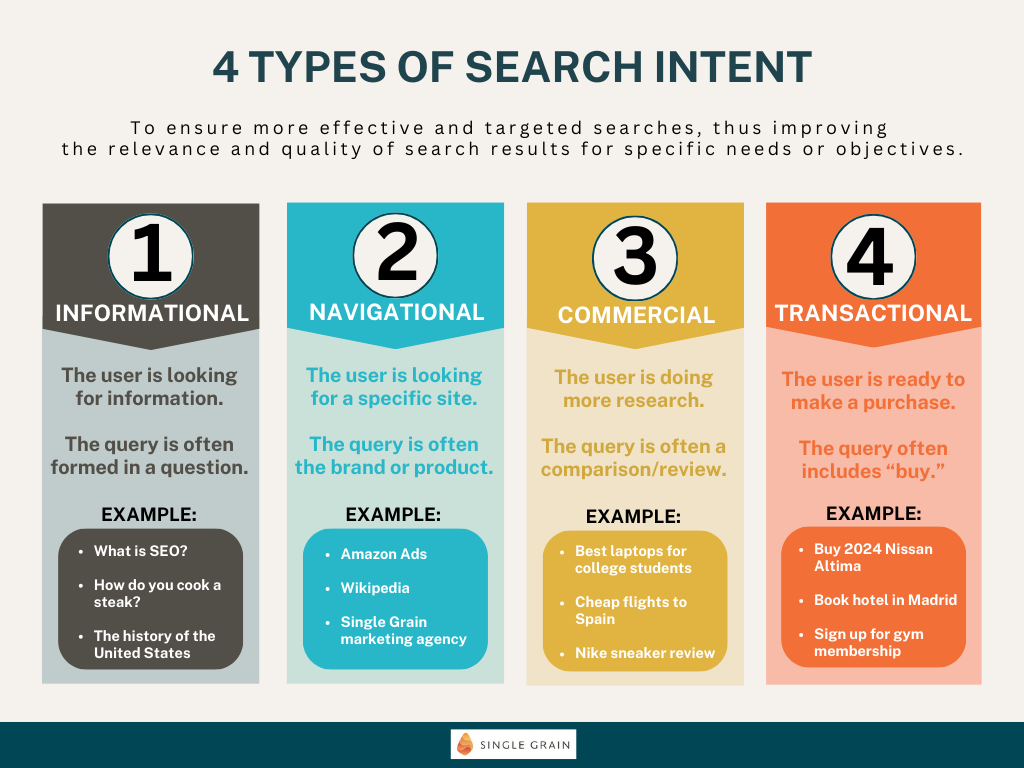
Recognizing these differences enables marketers to modify their strategy and optimize for engagement and conversion.
1) Informational Search Intent
Informational keywords are usually searched for to find things like tutorials, tips, advice and solutions that help the searcher educate themselves on a particular topic.
For example, when you search for “How to do keyword research,” you will see the following results on Google:
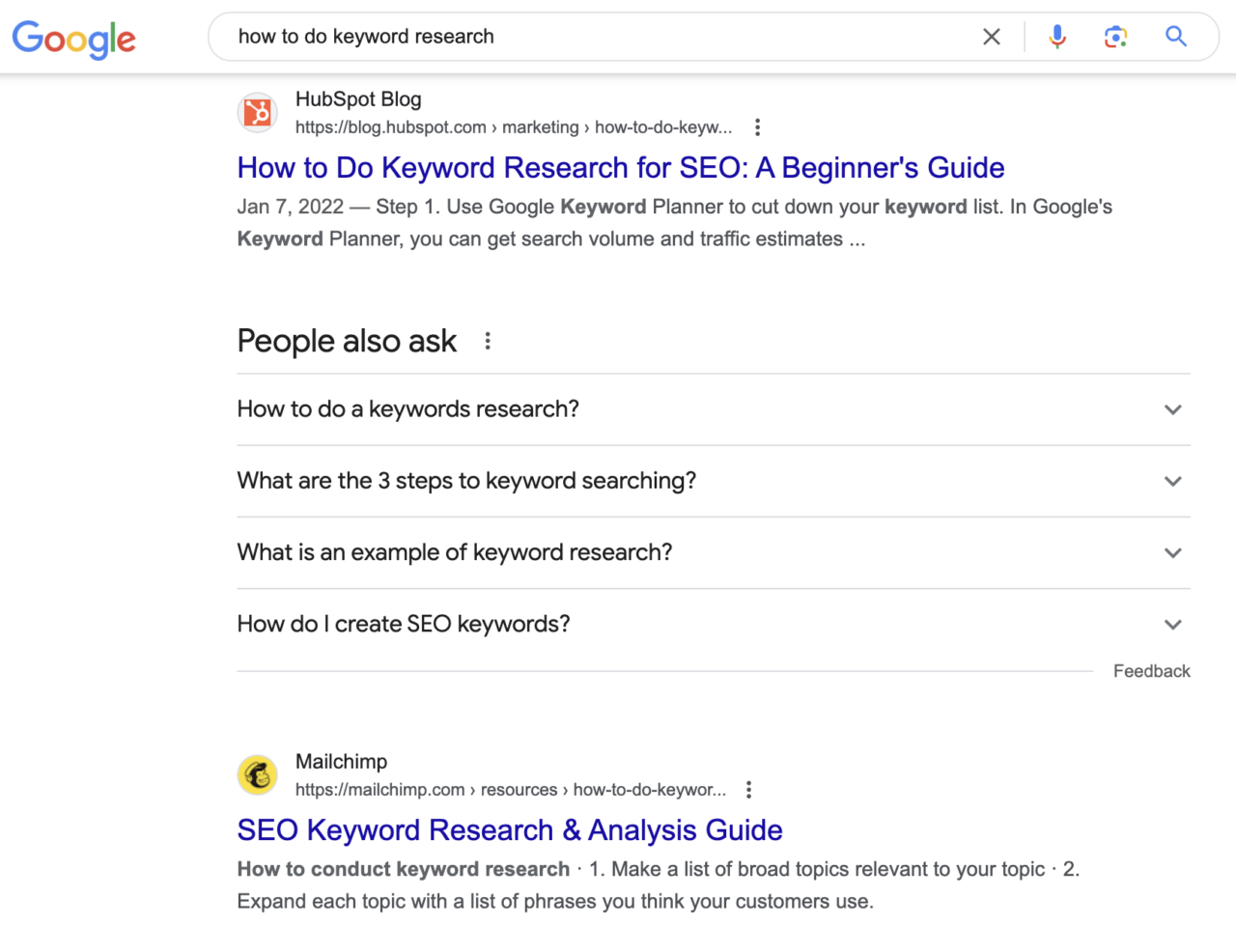
All the pages that rank on top are detailed guides on keyword research. This means people searching for the term are looking for tutorials and guides.
2) Navigational Search Intent
This kind of search is done by people who already know where they want to go or what they want to do — but use Google to help them get to that specific website.
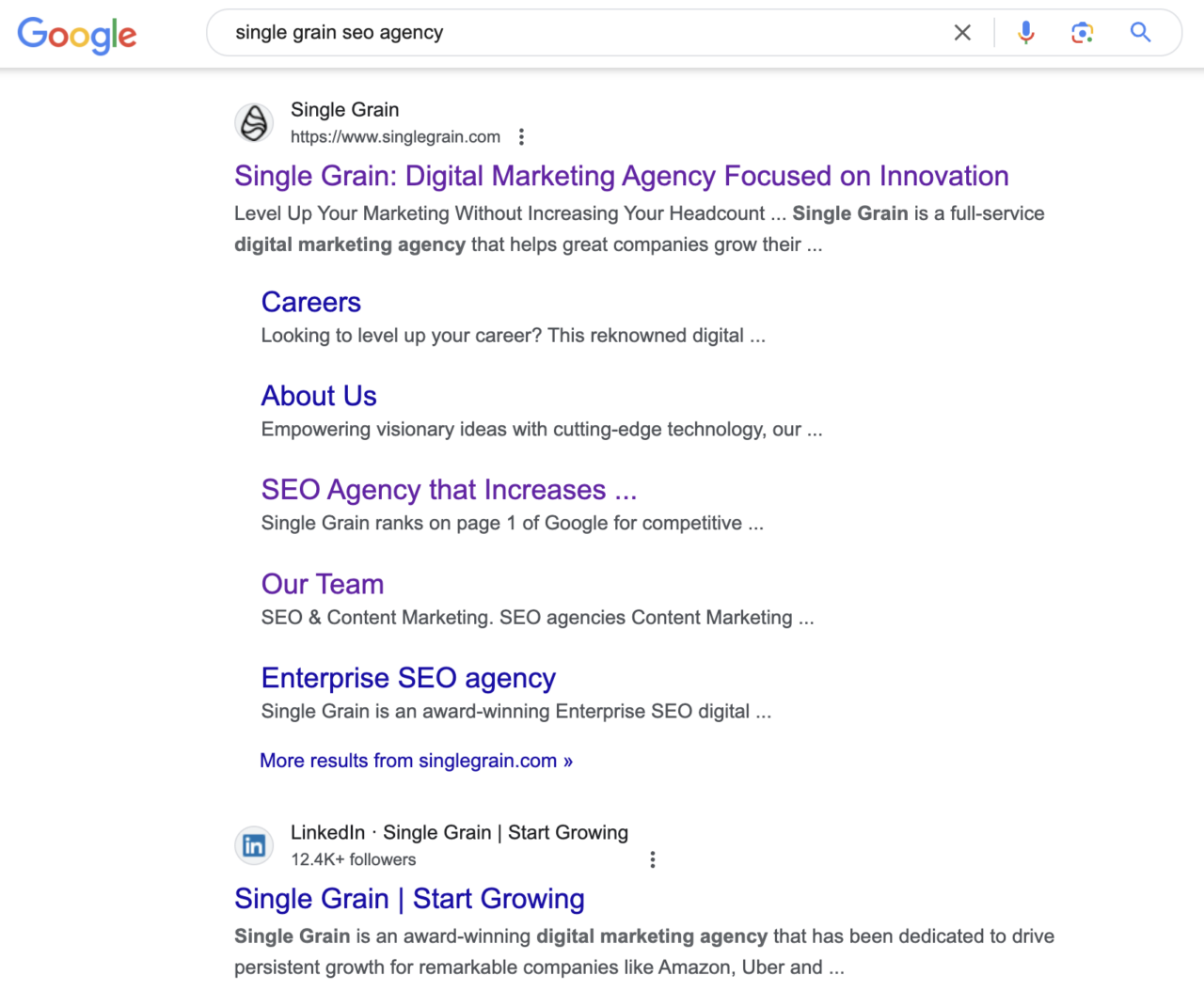
These people could also potentially be your customers already and want to navigate to your software to use it.
Examples of such keywords can be:
- Facebook login
- Twitter login
- Bluehost contact
- Single Grain
3) Commercial Search Intent
These terms are searched for when people are looking to buy something but haven’t decided on the brand or the best alternative yet. At this stage, they want to compare alternatives based on their pros and cons.
For example, “best list building tools” is a good buyer intent keyword:

Pages ranking on top are product reviews and comparison pages. These pages help the searcher choose the best email list builder tool from all the available alternatives.
4) Transactional Search Intent
People search for transactional keywords when they are ready to buy something. They have already researched what they are looking for, compared options, and now have their credit cards in their hands.
For example, when you search for “Samsung LED TV,” this is what you see in the SERPs:

Google ranks e-commerce stores and product pages on top because people searching for this term are looking to purchase a Samsung LED TV right now.
Just want someone to do all the work for you? Single Grain’s SaaS growth experts can help!👇
4 Ways to Get Your Prospects to Signal SaaS Buyer Intent
Finding early indicators of buyer intent in the dynamic world of SaaS sales can significantly speed up the conversion process.
Here are four tried-and-true methods to help you identify sincere interest from your prospects so that your sales approach is more focused and successful.
1) Company Profile of the Buyer
Does every lead you get qualify to be a buyer or potential customer? Ask yourself these questions to determine this:
- Does their company align with the type of clientele you serve?
- Do they appear to be an ideal match for your SaaS solution?
If the answer is affirmative, there’s a strong indication that they are genuinely interested in making a purchase. When analyzing and assessing the company profile, consider looking at the following aspects:
- Workforce size
- Funding stage
- Industry sector
- Revenue metrics
Additionally, it’s crucial to craft your ideal buyer persona and use it as a screening tool for potential customers. When developing your buyer persona, pay close attention to the following elements:
- Construct a customer profile based on demographic factors such as age, location, language and interests.
- Gain insight into your customers’ pain points.
- Understand the objectives your buyers aim to accomplish with your product or service.
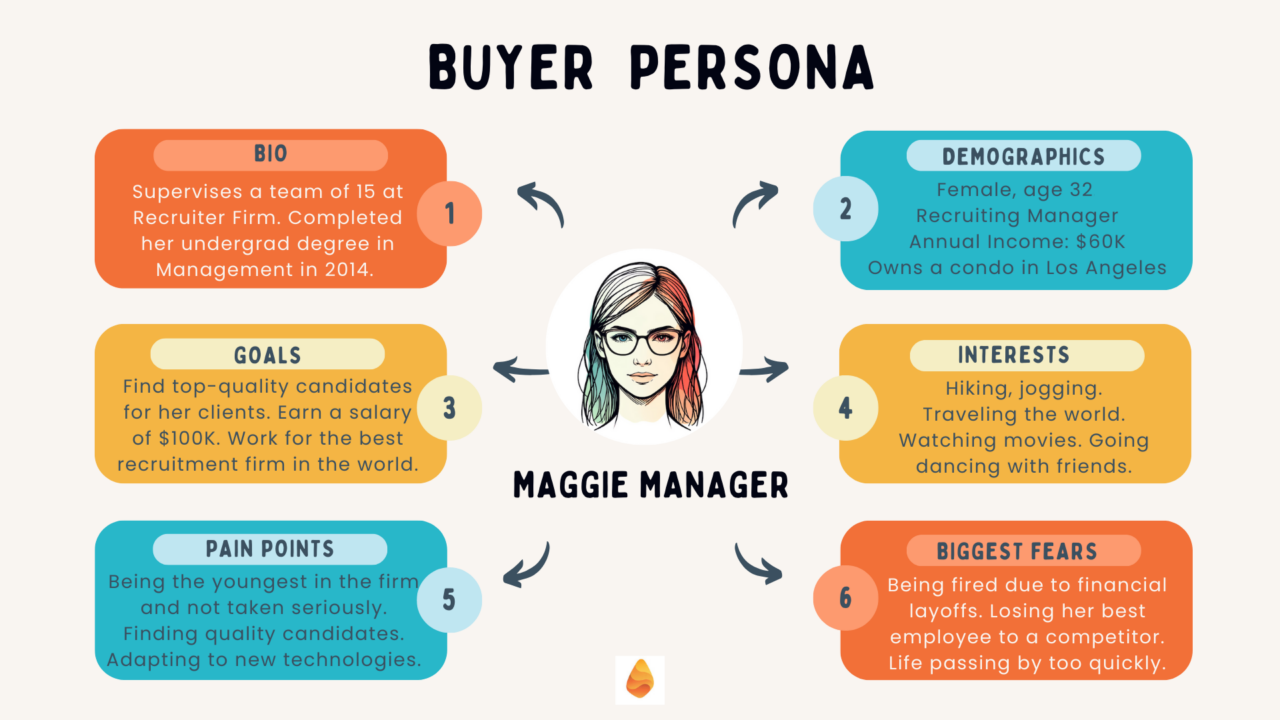
2) Monitor Second-Party and Third-Party Data
Until now, we’ve discussed using first-party (our own) purchase intent data to determine buying intent. But buyer intent data can also be second and third-party data. This is basically the first-party intent data of websites other than yours.
For example, sites like TrustPilot have visitors coming to their website and sharing reviews of SaaS products:
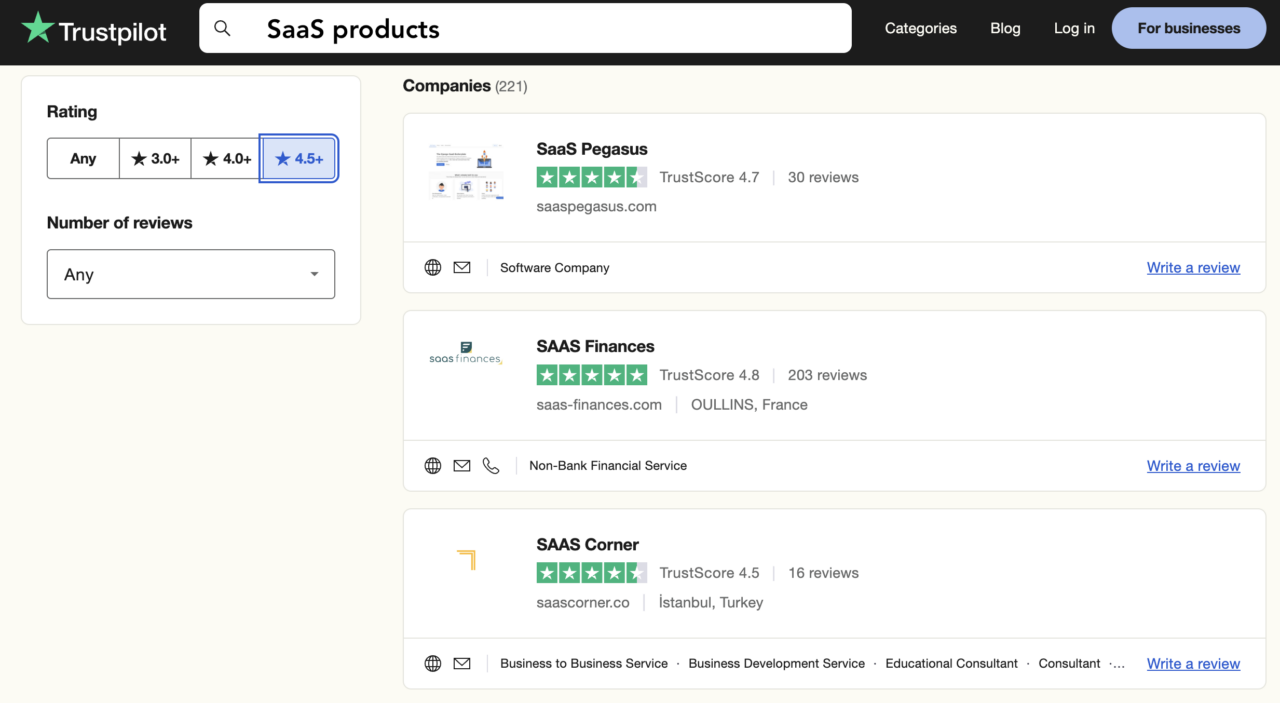
This data helps you identify the purchase intent. Comments, reviews and the sharing of your content on platforms apart from your own are regarded as indicators of intent.
Fortunately, you don’t need to sift through every single review or tweet to gauge interest or extract insights. Many platforms offer to provide this data (third-party data), and it’s often a worthwhile investment.
When individuals seek out reviews concerning your brand or product, it serves as a valuable signal of intent further down the sales funnel.
Moreover, external intent data aids in understanding user preferences and dislikes. If a particular piece of content or product feature attracts numerous positive mentions, it suggests the effectiveness of your strategy and that it is worth repeating.
Related Content: The Kick-Ass Guide to Increase Customer Reviews for Your Online Store
3) Based on Engagement Across Different Channels
Unlike other generic products, buyers of SaaS products do not just stumble onto your website by chance and purchase your solution the same day.
The buying journey of any SaaS user is typically longer. They’ll scour the internet, checking out websites, peeking at social media pages, and maybe even subscribing to newsletters.
A random person who comes to your website and signs up for a product demo isn’t necessarily a buyer. They might just want to know more about your product without any buying intention. They could even be your competitor just trying to test your products for research.
On the other hand, a person who opens one of your cold emails got to your website, landed on your company’s LinkedIn, and again circled back to your website to sign up for a demo sure looks and feels like someone who can potentially make a purchase.
4) Analyzing Buyer Intent Signals in Follow-Ups
Another solid clue to pay attention to is how people respond to your follow-ups. You know, those emails, browser notifications, calls, and such.
If you’re reaching out to someone who’s just browsing your blog for information, they’re probably not going to be too keen on chatting or engaging with your follow-ups. That means they’re likely not going to end up buying anything, either.
On the other hand, if someone’s really interested in engaging with your follow-ups, like replying to emails or being active in the conversation, well, that’s the person you want to focus on nurturing. They could be your next customer in the making.
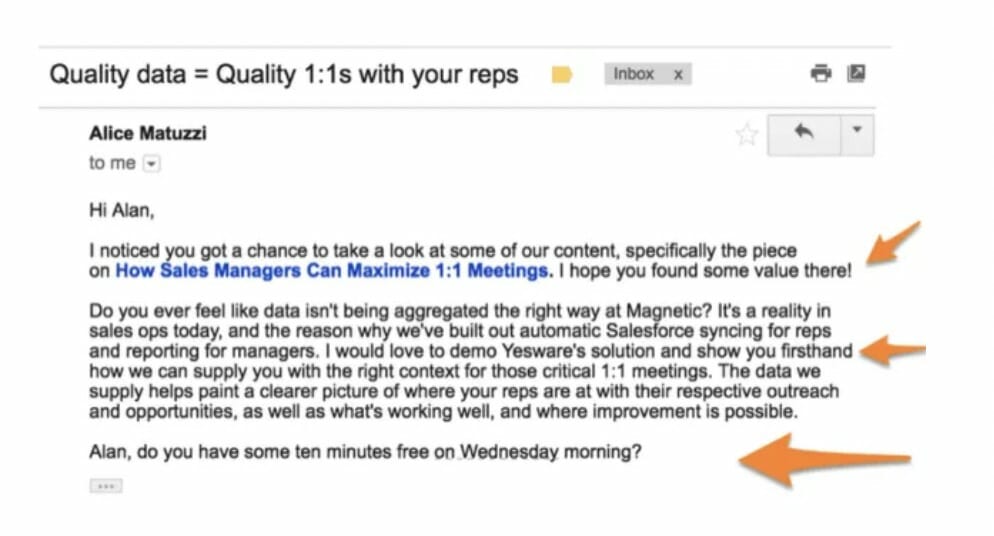
5) Behavioral Analysis Through Website Interaction
A smart way to know about the purchase intent of your website visitors is to record their activity on your site.
Using tools like Smartlook, you can record clips of how your website visitors interact with your website:
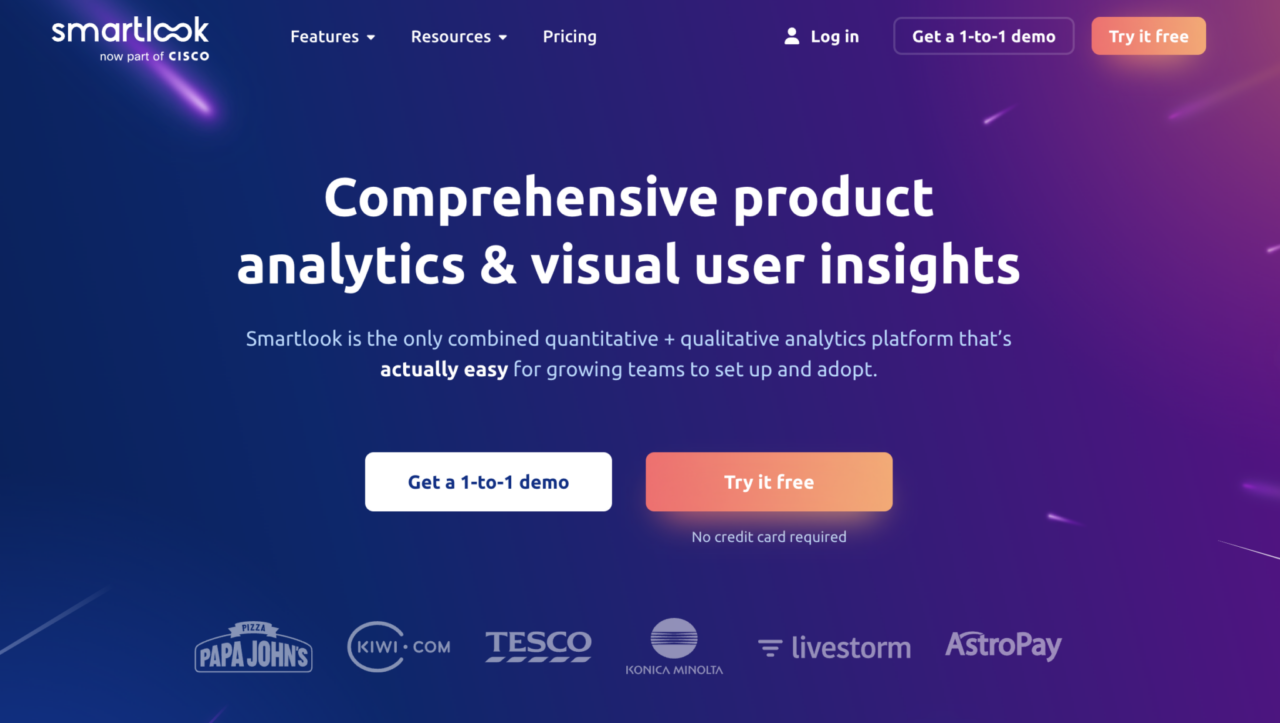
It can give you a good understanding of what your prospects are looking for on your website: consume content, check prices, or look for discounts.
With this data, you can then laser-target your sales approach with different prospects.
Related Content: We Refreshed 15 Posts on 3 SaaS Blogs – And Increased Organic Traffic on All
4 Ways to Get Your Prospects to Develop Buyer Intent
To develop buyer intent, here are four proven strategies that you can implement:
1) Use Outcome and Problem-Driven Content on all Your Marketing Assets
Your SaaS content needs to address the problems of your prospects and should aim to solve these problems.
Simply forwarding emails and writing social posts about discounts and free trials isn’t going to cut it, not even if you showcase your product’s features in the best possible way.
You need to understand your audience’s pain points and craft your content based specifically on them. Empower your prospects to make informed purchasing decisions by clearly understanding their problems and aligning with their organizational objectives.
When you understand people’s pain points, you won’t even have to attempt to sell to them to foster their purchasing intent.
This strategy holds for all of your marketing channels: your blog, social media platforms, paid ads, or landing pages. For instance, this Todoist page targets a major pain point:

2) Find an Out-of-the-Box Way to Showcase Products
While various marketing strategies, such as emails, paid ads, influencer marketing, SEO, etc., are available, what truly sets you apart is finding a clever and distinctive approach to highlight your product’s features in your marketing endeavors.
Typeform used an innovative tactic to promote its video platform VideoAsk by creating an interactive film titled “Locked In.” Within this film, viewers engage with the storyline by making choices based on prompts, showcasing the platform’s interactive capabilities.
VideoAsk lets users craft short video clips for lead generation, audience interaction, customer feedback, and more. These videos incorporate interactive features such as questions and selectable options.
Through “Locked In,” potential customers are given a tangible preview of the platform’s functionality, offering them a firsthand experience of the engagement possibilities it provides.
Related Content: SaaS Lead Generation: How We Improved Axure’s Lead Quality Overnight
3) Leverage User-Generated Content and Shoutouts
Apart from your own content marketing, make sure to leverage user-generated content to your advantage. This could be in the form of testimonials and case studies on your website.
You can even incentivize your customers or “RevenueHeroes” to create and share their success stories after using your product. These social shares can foster buying intent significantly.

They give your brand that much-needed credibility and rapport to attract new leads.
If your products allow for it, encourage users to create UGC by trying on or demonstrating your products virtually. This could be through virtual try-on features on your website or app or user-generated tutorial videos showcasing how they use your products.
4) Capture the Imagination of Prospects With Product-Led Creatives
Focus on showcasing the benefits and outcomes your SaaS product delivers rather than just listing features. Create visuals that depict how your product solves a problem or fulfills a need for your target audience.
A product-led creative is anything (usually a visual) that attempts to explain the working of your SaaS product, like a product demonstration for example.
This could be:
- An infographic showing your product’s features
- A video tutorial exploring a particular feature of your product
- A slideshow showing why you’re better than your competitors

Understanding SaaS Buyer Intent for Success
Understanding and harnessing purchasing intent data is paramount for modern marketing strategies, particularly in the SaaS industry.
By leveraging diverse sources of intent signals, businesses can tailor their approach, prioritize leads effectively and nurture prospects toward conversion.
Remember that just because someone isn’t showing significant buying intent signals does not mean they’ll never buy from you. They might just need more time. They could become a customer down the line, just not right at this moment.
So, while they’re not exactly at the forefront of your lead list, it’s still worth keeping them in the loop for future opportunities.
If you’re ready to level up your SaaS product, Single Grain’s SaaS growth experts can help!👇



